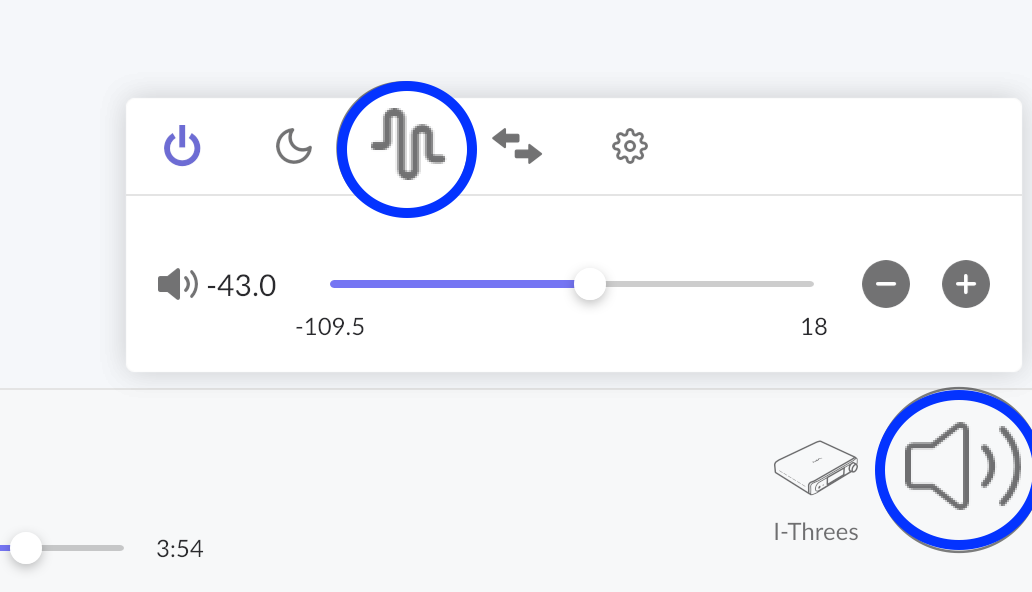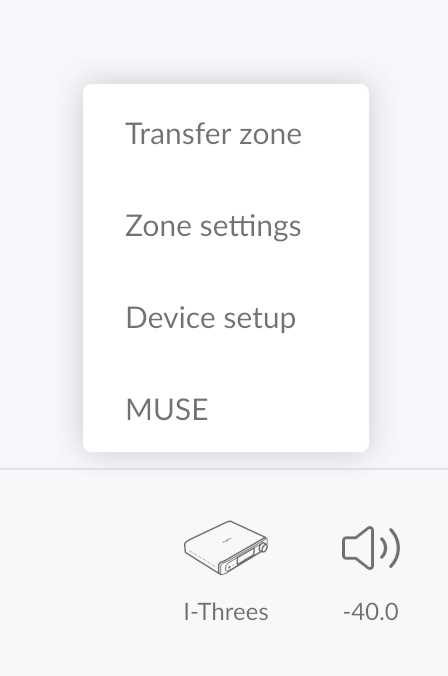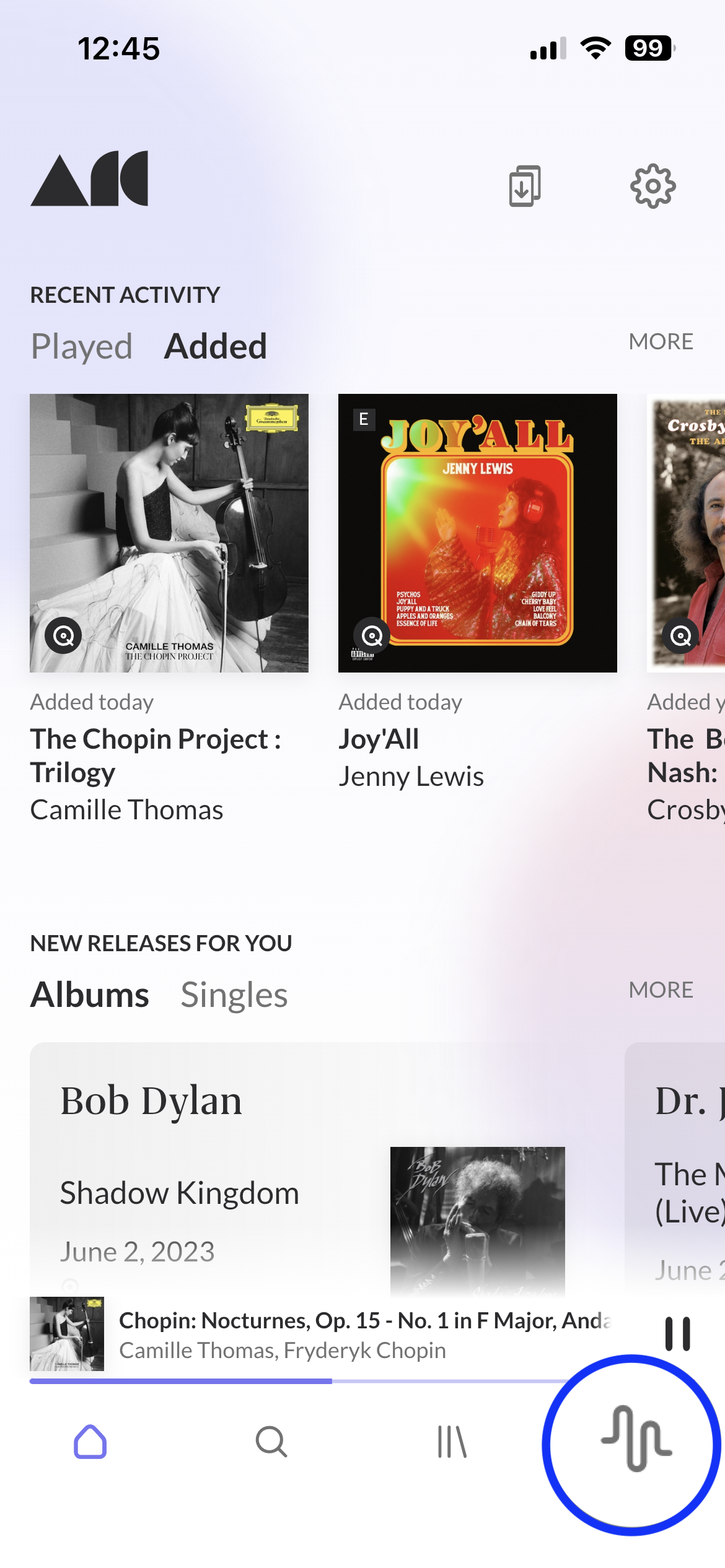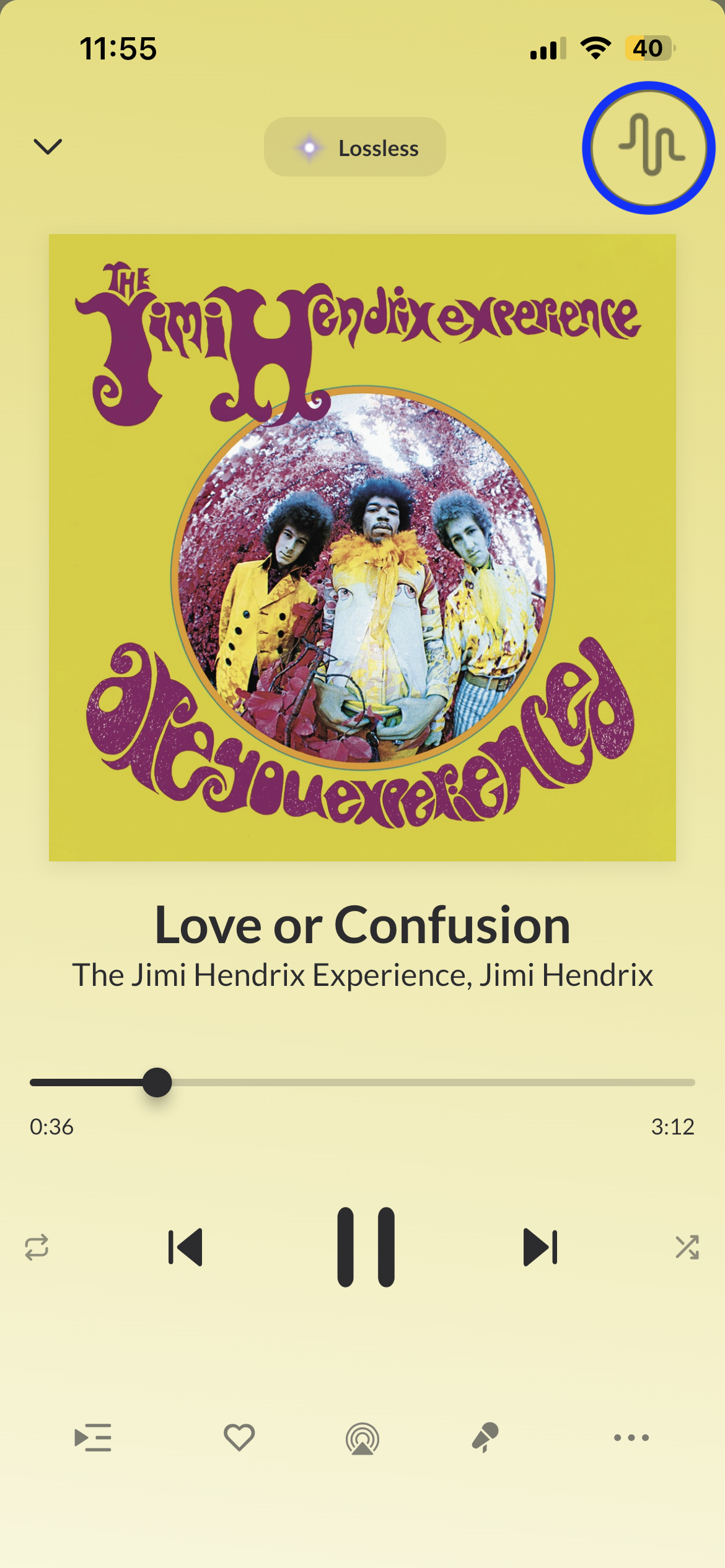MUSE - Precision Audio Control: Accessing the MUSE suite
There are several ways to access the MUSE - Precision Audio Control suite.In Roon
From your volume controls:



Using a keyboard shortcut:
In ARC
From the ARC home screen:

From the ARC Now Playing screen:

In Roon
From your volume controls:
By right-clicking or long-pressing the current zone icon:
From Signal Path:
Using a keyboard shortcut:
- Windows: Ctrl-/
- Mac: Command-/
In ARC
From the ARC home screen:
From the ARC Now Playing screen:
Related Articles
MUSE - Precision Audio Control: Procedural Equalizer
The Procedural Equalizer is part of Roon's MUSE Suite. For more information on accessing MUSE, see here. Procedural EQ is not included in MUSE for ARC The procedural equalizer is used for advanced audio control configurations like digital crossovers, ...MUSE - Precision Audio Control: Audeze Presets
Audeze Presets are part of Roon's MUSE suite. For more information on accessing MUSE, see here. Audeze Presets are not included in MUSE for ARC but can be approximated using EQ. What are Audeze Presets? Audeze presets apply carefully designed ...MUSE - Precision Audio Control: Headroom Management
Introduction Headroom Management is part of the MUSE suite. For more information on accessing MUSE, see here. Digital signal processing can result in "clipping", or audio samples that exceed the allowed range. These samples are "clipped" to a maximum ...MUSE - Precision Audio Control: Convolution
Introduction Convolution is part of Roon's MUSE suite. For more information on accessing MUSE, see here. Convolution is not included in MUSE for ARC Convolution is a powerful signal processing technique commonly used for room correction, headphone ...MUSE - Precision Audio Control: Crossfeed
Crossfeed is part of the MUSE suite. For more information on accessing MUSE, see here. In Roon In ARC Crossfeed is for headphone listening. It mixes some of the left channel into the right channel, and vice versa, while applying filters and delays ...
Visit the Roon Community!
Need help? Thousands of Roon subscribers and audio enthusiasts are chatting over on our community site right now, join them! You don't even need a Roon subscription to sign up.